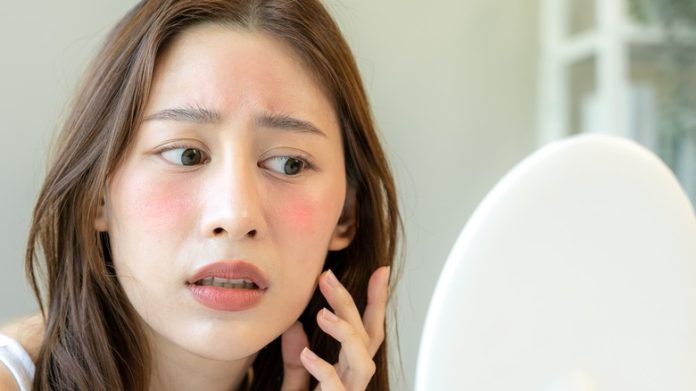Hives on the face can be uncomfortable, unsightly, and even embarrassing. Whether caused by an allergic reaction or other trigger, these raised, red bumps can be itchy and painful. If you’re dealing with hives on your face, here are some steps you can take to get rid of them:
1. Identify the Cause of your Hives
Before you can effectively treat your hives, it’s important to figure out what’s causing them. Common triggers include allergies to food, medication, or skincare products, as well as stress, heat, or pressure on the skin. If you’re not sure what’s causing your hives, see a doctor or allergist for a diagnosis.
2. Avoid the Trigger
Once you know what’s causing your hives, the best way to get rid of them is to avoid the trigger. If you’re allergic to a certain food or medication, avoid consuming it in the future. If you suspect a skincare product is the culprit, stop using it and switch to a gentle, fragrance-free alternative. If your hives are caused by stress or pressure on the skin, try to minimize those factors in your life.
3. Take Antihistamines
Antihistamines are a common treatment for hives, as they can help reduce itching and swelling. Over-the-counter options like Benadryl, Claritin, and Zyrtec can be effective for mild cases of hives. If your hives are severe, your doctor may prescribe a stronger antihistamine or even a corticosteroid.
4. Apply a Cool Compress
A cool compress can help soothe the itch and reduce inflammation. You can make a compress by soaking a clean cloth in cool water and applying it to the affected area. Alternatively, you can use a bag of frozen vegetables or a cold gel pack.
5. Use Topical Treatments
Topical treatments like calamine lotion or hydrocortisone cream can also help reduce itching and swelling. Be sure to choose a product that’s safe for use on the face, and follow the instructions carefully.
6. Practice good Skincare Habits
If you’re prone to hives on your face, it’s important to take good care of your skin to prevent further outbreaks. Use gentle, fragrance-free skincare products, and avoid harsh exfoliants or scrubs. Keep your skin moisturized, and protect it from the sun with a broad-spectrum sunscreen.
7. Seek Medical Attention if Necessary
If your hives are severe or persistent, or if they’re accompanied by other symptoms like difficulty breathing or swelling of the lips or tongue, seek medical attention right away. These could be signs of a serious allergic reaction, which requires immediate treatment.
Conclusion
Hives on the face can be uncomfortable and unsightly, but there are steps you can take to get rid of them. By identifying the cause of your hives, avoiding the trigger, and using treatments like antihistamines, cool compresses, and topical creams, you can soothe the itch and reduce inflammation. And by practicing good skincare habits, you can prevent further outbreaks in the future. If you’re unsure how to treat your hives, or if they’re severe or persistent, don’t hesitate to seek medical attention.
Khalid Irfan is a Fitness expert who enjoys spending time in gym. He also enjoys being in the outdoors and exploring new opportunities whenever they arise as well as researching new topics to expand his horizons.

